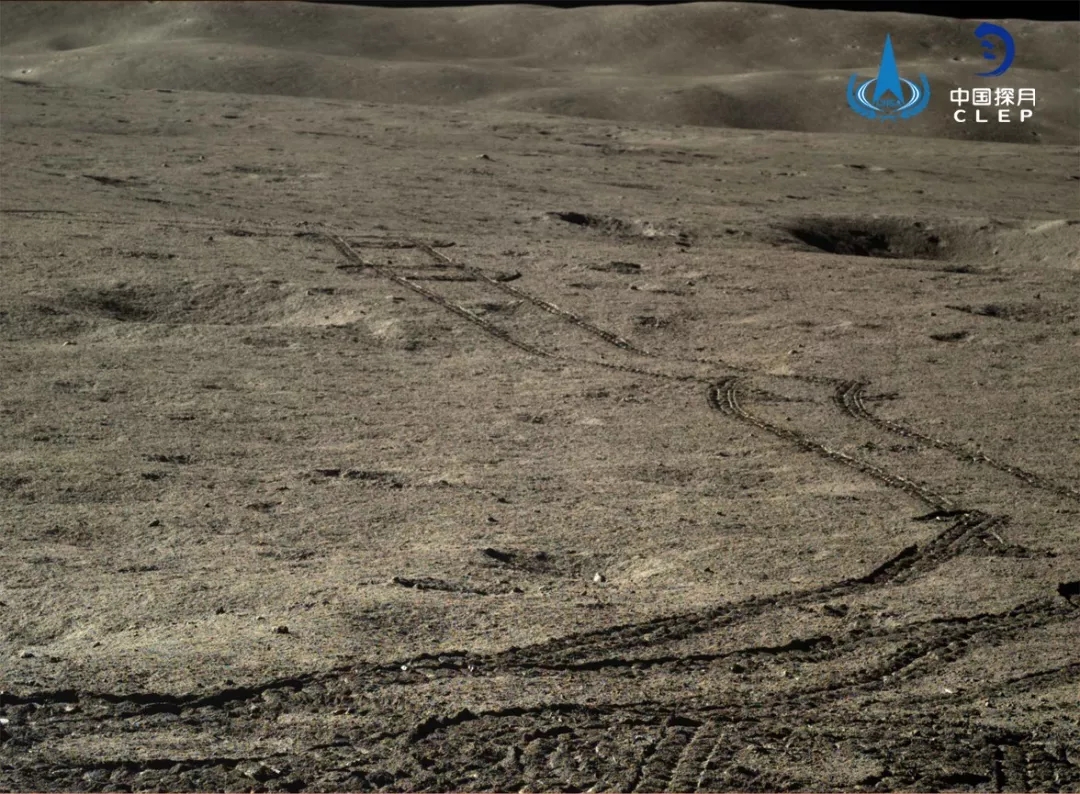On Far Side of the Moon, Chinese Lander and Rover Hit One-Year Mark


China hit a historic milestone on the moon Friday (Jan. 3) as its Chang'e 4 lander and rover celebrated their first full year exploring the lunar far side.
The Chinese Chang'e 4 moon lander and its rover Yutu 2 officially completed their 13th lunar day on Thursday (Beijing time), according to the state-run Xinhua news agency. The pair has switched to a dormant mode to sleep through the lunar night, according to the Lunar Exploration and Space Program Center of the China National Space Administration (CNSA).
Chang'e-4 probe launched to the moon on Dec. 8, 2018 and made the first-ever soft landing on the far side of the moon on Jan. 3, 2019. The spacecraft touched down in in the Von Kármán crater at the lunar South Pole-Aitken Basin, where they have been ever since.
Related: Chang'e 4 in Pictures: China's Mission to the Moon's Far Side
A record-breaking moon rover
As of Friday, the Yutu 2 rover has driven 1,173 feet (357.695 meters) on the moon's far side, according to China's state-run Xinhua news service. Yutu-2 (it's name means Jade Rabbit-2) has worked much longer than its initial three-month design life, becoming the longest-working rover on the moon.
"The scientific instruments on the lander and rover worked as planned. The rover conducted explorations of several sites and photographed and conducted an infrared detection of a stone on the lunar surface, said the center," Xinhua wrote of the mission Friday.
Chang'e-4 mission scientists have christened their landing site Statio Tianhe, Xinhua stated. "Tianhe" is Mandarin for the Milky Way and "Statio" is Latin for station.
Breaking space news, the latest updates on rocket launches, skywatching events and more!
Chang'e-4's Yutu 2 rover has made several discoveries on the moon's farside. Among them, it found that the lunar regolith around the Chang'e-4 lander contains the minerals olivine and pyroxene, which came from deep inside the moon.
With Chang'e-4 on the far side of the moon, CNSA has been relying on a relay satellite called Queqiao, which is stationed beyond the moon in a stable Lagrange point about 310,685 miles (500,000 kilometers) from Earth. Zhang Lihua, the satellite's chief designer, said it could last another 10 years, according to Xinhua.
"We will let the Queqiao work as long as possible. It could also provide communication for probes from other countries if they intend to explore the moon's far side within the lifetime of the satellite," Xinhua quoted Ye Peijian, a Chinese Academy of Sciences researcher and a senior space expert, as saying.
While the Chang'e-4 mission continues, China is looking ahead to its next lunar mission: Chang'e-5.
That new mission, which is expected to launch sometime in 2020, will launch another lander and rover to the moon on a mission to return lunar samples to Earth.
- Photos from the Moon's Far Side! China's Chang'e 4 Lunar Landing in Pictures
- NASA Probe Spots China's Chang'e 4 Lander on Far Side of the Moon (Photo)
- China's Chang'e 4 Returns First Images from Moon's Farside Following Historic Landing
Leonard David is author of the recently released book, "Moon Rush: The New Space Race" published by National Geographic in May 2019. A longtime writer for Space.com, David has been reporting on the space industry for more than five decades. Follow us on Twitter @Spacedotcom or Facebook.


Leonard David is an award-winning space journalist who has been reporting on space activities for more than 50 years. Currently writing as Space.com's Space Insider Columnist among his other projects, Leonard has authored numerous books on space exploration, Mars missions and more, with his latest being "Moon Rush: The New Space Race" published in 2019 by National Geographic. He also wrote "Mars: Our Future on the Red Planet" released in 2016 by National Geographic. Leonard has served as a correspondent for SpaceNews, Scientific American and Aerospace America for the AIAA. He has received many awards, including the first Ordway Award for Sustained Excellence in Spaceflight History in 2015 at the AAS Wernher von Braun Memorial Symposium. You can find out Leonard's latest project at his website and on Twitter.
